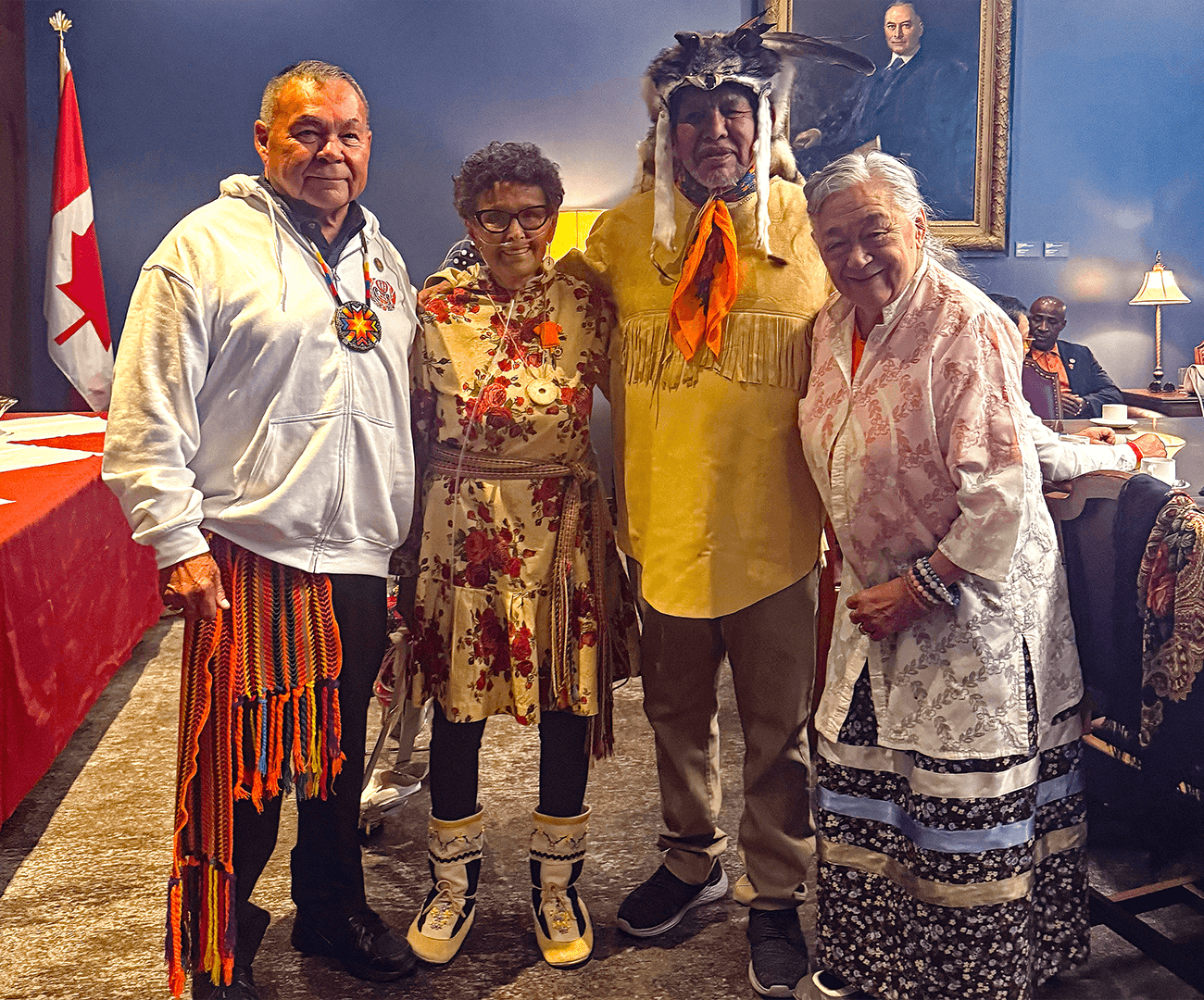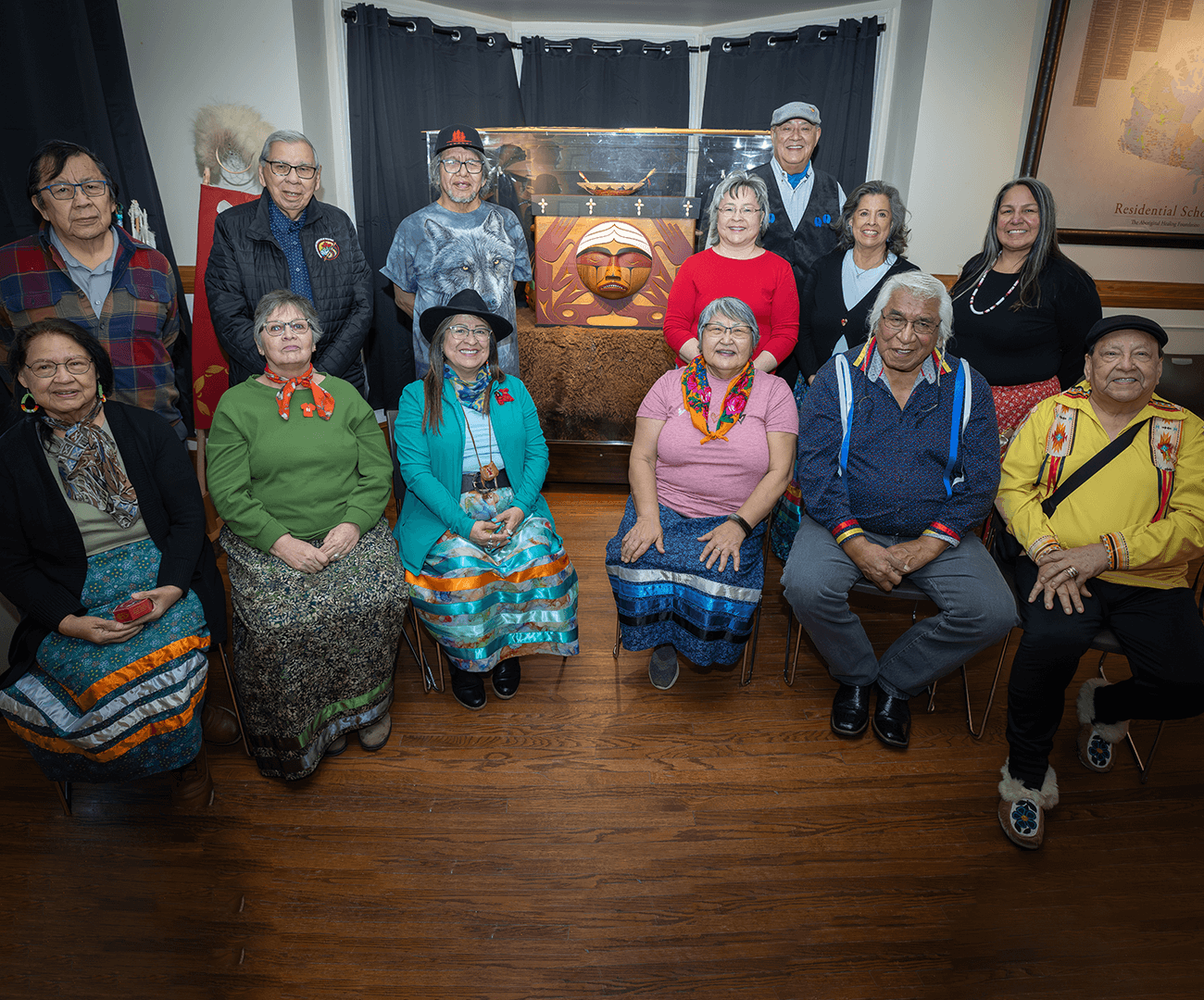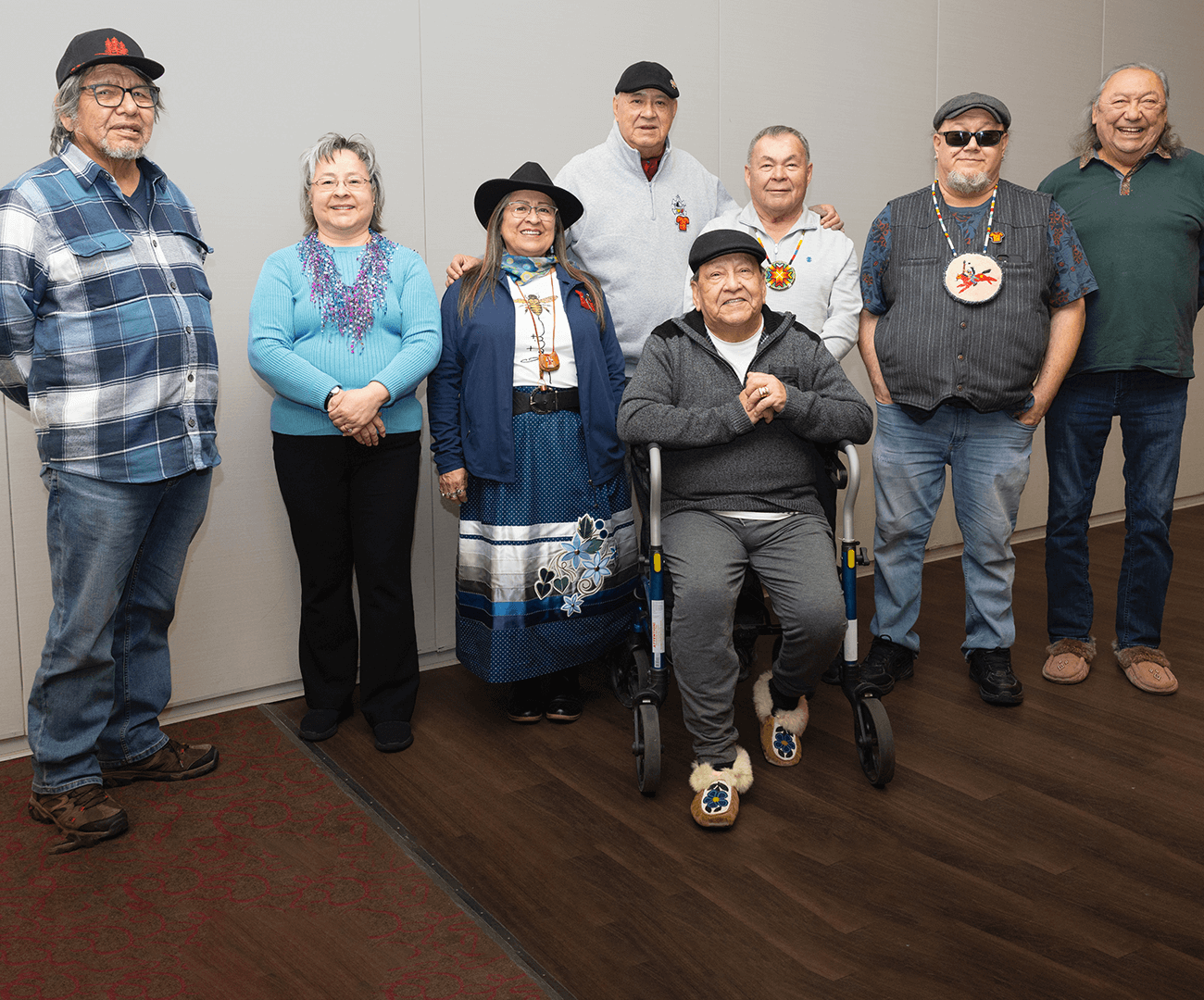NCTR Governance
The National Centre for Truth and Reconciliation (NCTR) is overseen by a Governing Circle. The Governing Circle includes Survivors and representatives of the University of Manitoba (UM).
The Governing Circle is guided by a Survivors Circle, as well as by Elders and Knowledge Keepers.
These governance structures are essential to ensuring Survivors are always at the heart of the NCTR and that the NCTR honours and upholds Indigenous laws, protocols, spiritual practices and established values.
– Eugene Arcand, No. 781, Residential School Survivor and Survivor Circle member, Muskeg Lake Cree Nation
For us, as Survivors, it is important that we see the NCTR as our home, where our truths, experiences and lives are validated, honoured and never forgotten. The staff carry the responsibility – both today and tomorrow – to ensure our voices are carried forward in a good way.
Elders and Knowledge Keepers also play a very important role at the NCTR. From visioning the turtle that sits in front of our building, to the sensitive work of honouring the children that never returned home from residential schools, our work would not be possible without them.
About the Governing Circle
In summer 2014, an 11-person nominating committee selected the first Governing Circle of the NCTR. Governing Circle members:
- Ensure Indigenous people are in control over the materials
- Provide advice and guidance on policies, activities, ceremonies, and protocols
- Make recommendations on ways to increase the Centre’s records, materials, and resources and on prospective partners
- Provide support on accessing the Centre’s records, materials and resources
The Governing Circle’s membership is structured to ensure Indigenous leadership is supported. Members must self-identify as First Nations, Inuit or Métis at all times. This includes five members representing Survivors, intergenerational Survivors, their families or ancestors. The remaining members represent UM Indigenous leadership.
Governing Circle members serve a three-year term (which can be renewed), meet quarterly and advise on the NCTR’s policies, priorities, activities, ceremonies, protocols and methods. The Governing Circle ensures ongoing Indigenous oversight of the NCTR.
Meet the NCTR Governing Circle
About the Survivors Circle
Following a national selection process, the NCTR welcomed its first Survivors Circle in 2017. One of its first ceremonial acts was to welcome the Truth and Reconciliation Commission of Canada’s (TRC) Bentwood Box back to the NCTR, which had been on display at the Canadian Museum for Human Rights since the TRC’s close.
The first Survivors Circle worked closely with staff at the NCTR, providing invaluable advice and guidance on an array of NCTR actions. Their perspectives were instrumental in the Independent Assessment Process (IAP) records case and development of the enhanced notice program for IAP records. Their direct advocacy efforts resulted in the NCTR’s Lessons Learned report and the National Student Memorial Register.
Today, the Survivors Circle continues to guide the NCTR. Members:
- Ensure that Survivors’ voices and perspectives remain central to NCTR programs and policies
- Provide advice and guidance to the NCTR, the Governing Circle, UM and partners on anything important to the broader Survivor community
Ry Moran, Former Executive Director of the NCTR
It was the Survivors’ truth and the power of their statements that changed this country’s perception of itself. Having Survivors at the core of the NCTR is essential, not only for respecting the past, but also for understanding where we’re going.
Meet the NCTR Survivors Circle
More Information on Governance
Read our Administrative Agreement (PDF) with the University of Manitoba.
Governing Circle Meeting Minutes
Coming soon.
Upcoming Governing Circle Meetings
Comings soon.
NCTR Annual Reports
NCTR’s spirit name – bezhig miigwan, meaning “one feather”.
Bezhig miigwan calls upon us to see each Survivor coming to the NCTR as a single eagle feather and to show those Survivors the same respect and attention an eagle feather deserves. It also teaches we are all in this together — we are all one, connected, and it is vital to work together to achieve reconciliation.



